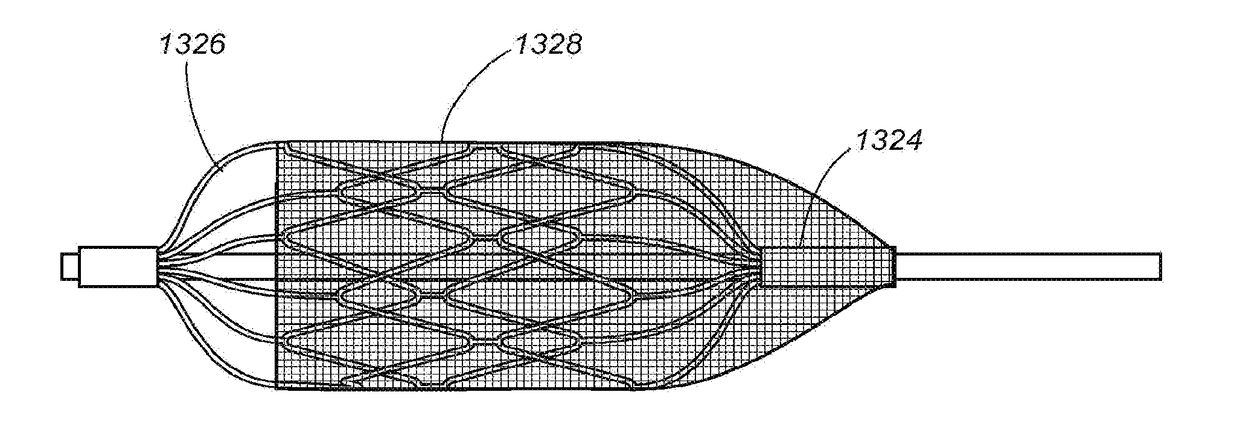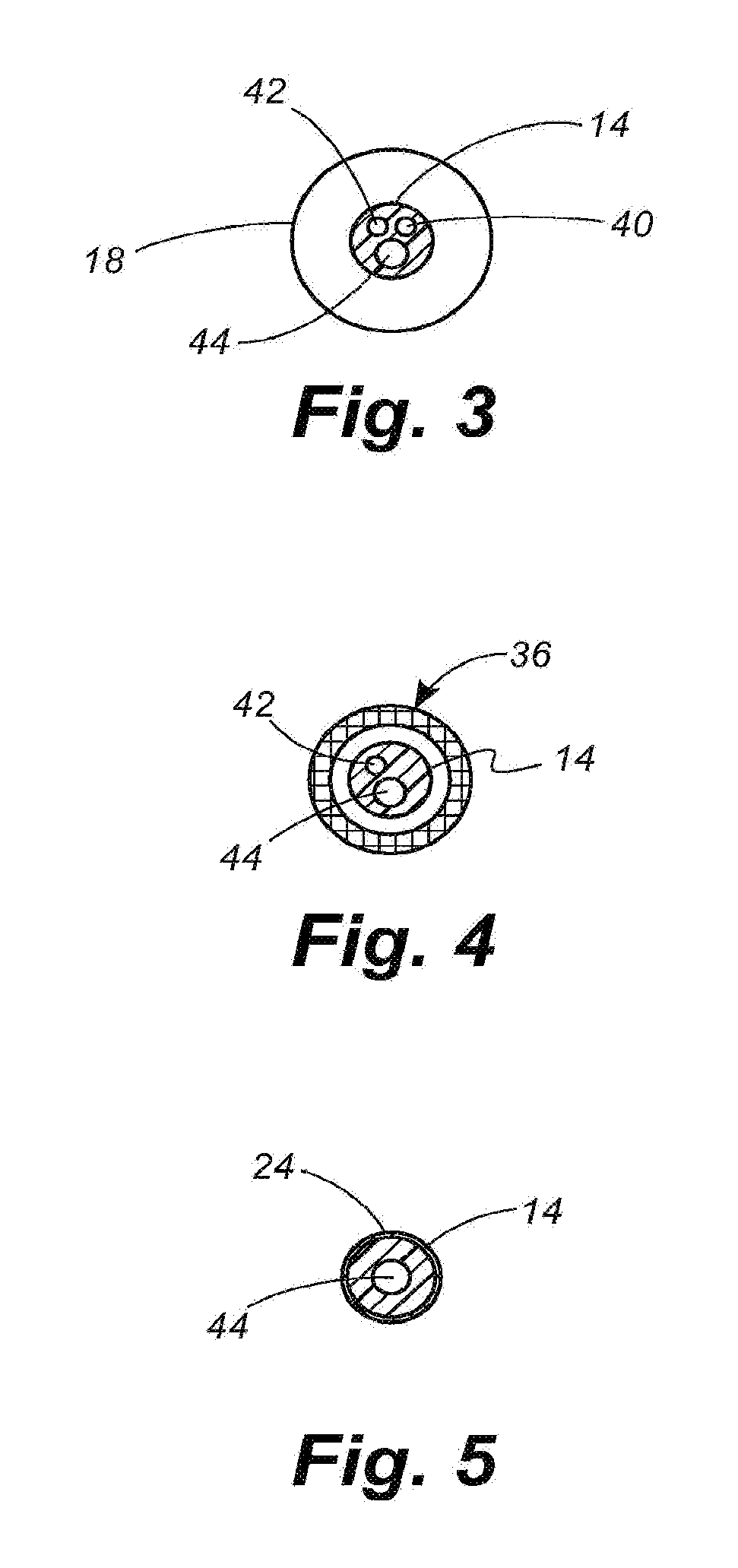Percutaneous transluminal angioplasty device with integral embolic filter
a technology of transluminal angioplasty and filter, which is applied in the field of surgical devices, can solve the problems of adverse clinical symptoms, adverse clinical consequences, and reduce blood flow to the organs
- Summary
- Abstract
- Description
- Claims
- Application Information
AI Technical Summary
Benefits of technology
Problems solved by technology
Method used
Image
Examples
Embodiment Construction
[0057]Referring now to the drawings, in which identical numbers indicate identical elements throughout the various views, FIGS. 1 and 2 illustrate a first embodiment of a percutaneous transluminal angioplasty device 10 according to the present invention. The device 10 comprises an elongated catheter 12 having a shaft 14 with a proximal end (not shown) and a distal end 16. Spaced a short distance proximally from the distal end 16 of the catheter 12 is an angioplasty balloon 18 of conventional design. In FIG. 1 the angioplasty balloon 18 is shown in a deflated or collapsed condition. In FIG. 2 the angioplasty balloon 18 is shown in an inflated condition.
[0058]Located between the angioplasty balloon 18 and the distal tip 14 of the catheter 12 is a collapsible filter 20. The filter 20 includes a proximal ring portion 22 and a distal ring portion 24. A plurality of elongated ribs 26 extend generally longitudinally between the proximal and distal rings 22, 24. These ribs can be made of a ...
PUM
 Login to View More
Login to View More Abstract
Description
Claims
Application Information
 Login to View More
Login to View More - Generate Ideas
- Intellectual Property
- Life Sciences
- Materials
- Tech Scout
- Unparalleled Data Quality
- Higher Quality Content
- 60% Fewer Hallucinations
Browse by: Latest US Patents, China's latest patents, Technical Efficacy Thesaurus, Application Domain, Technology Topic, Popular Technical Reports.
© 2025 PatSnap. All rights reserved.Legal|Privacy policy|Modern Slavery Act Transparency Statement|Sitemap|About US| Contact US: help@patsnap.com



